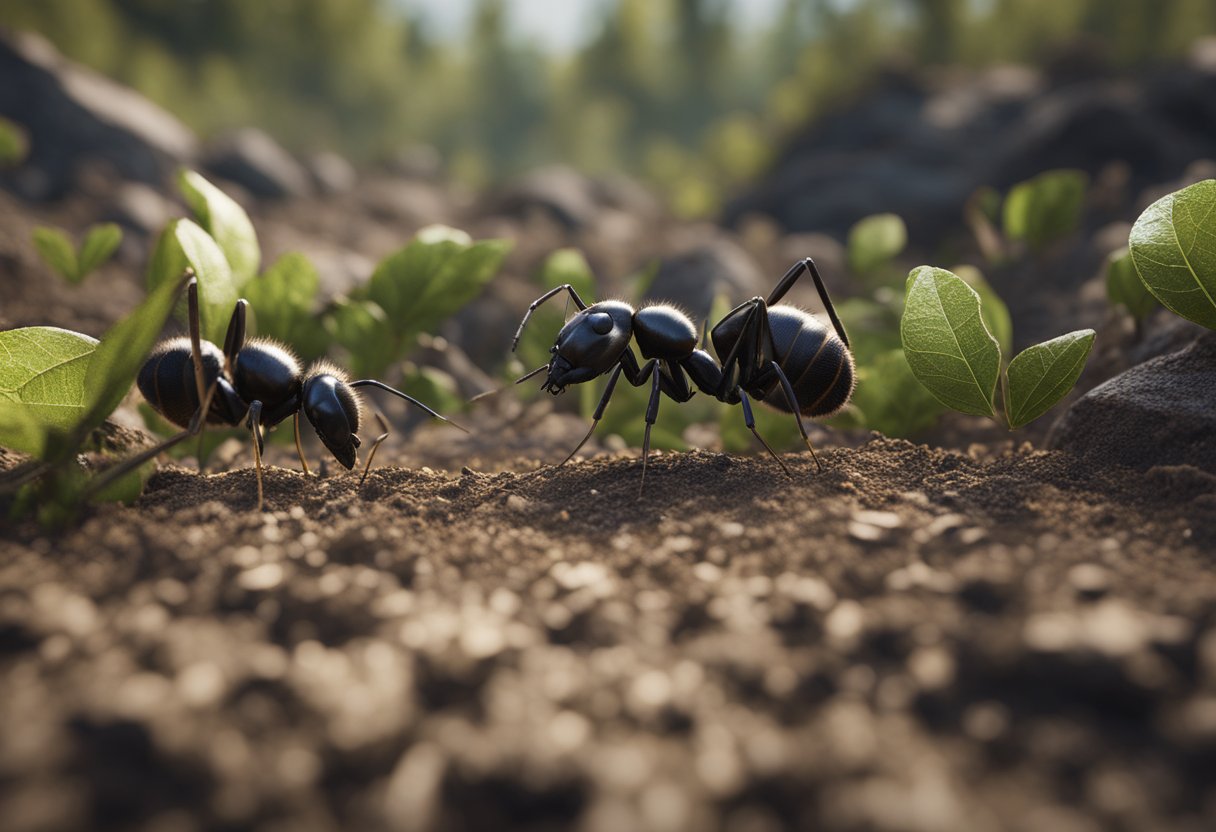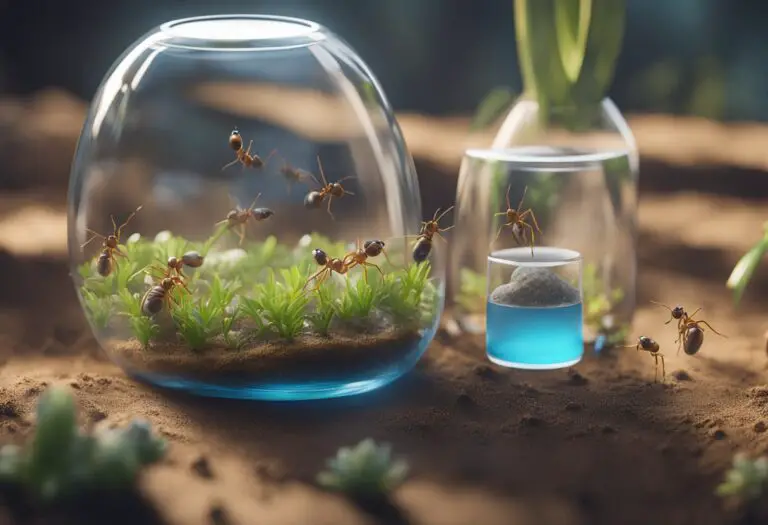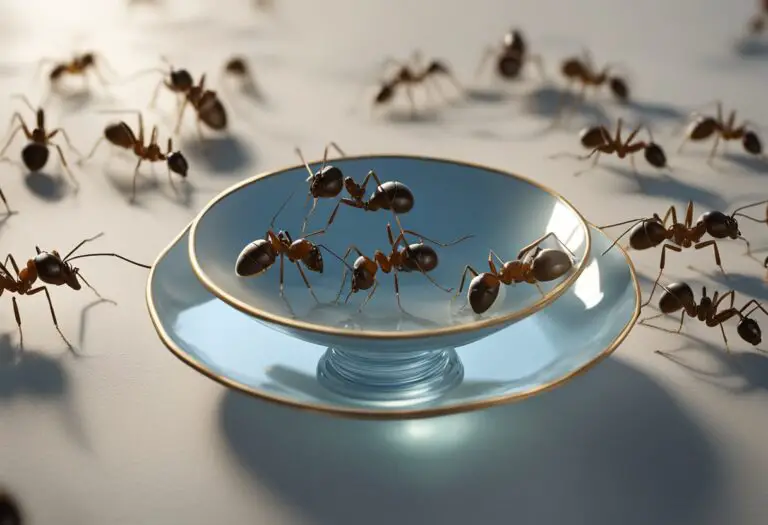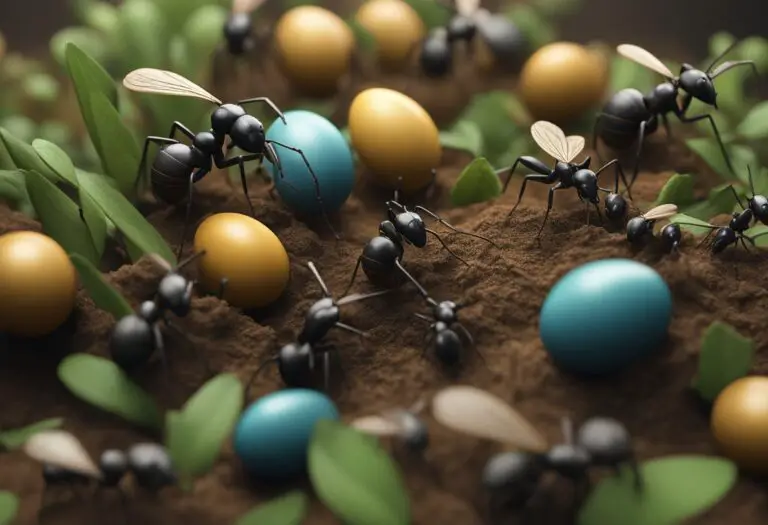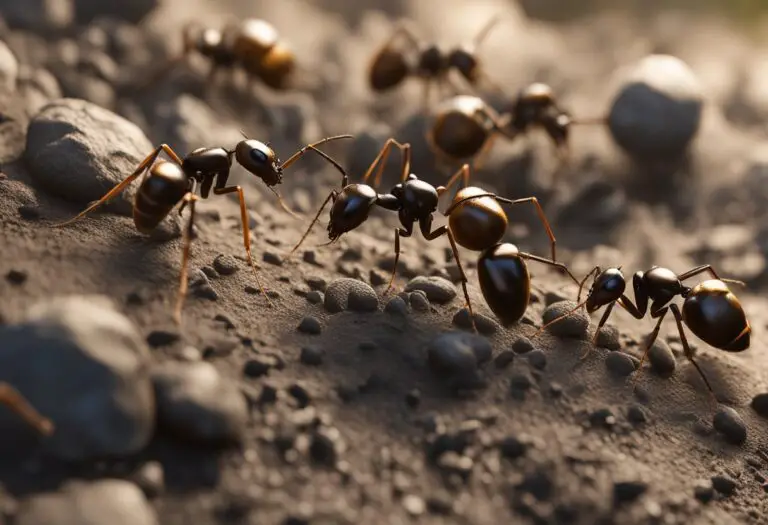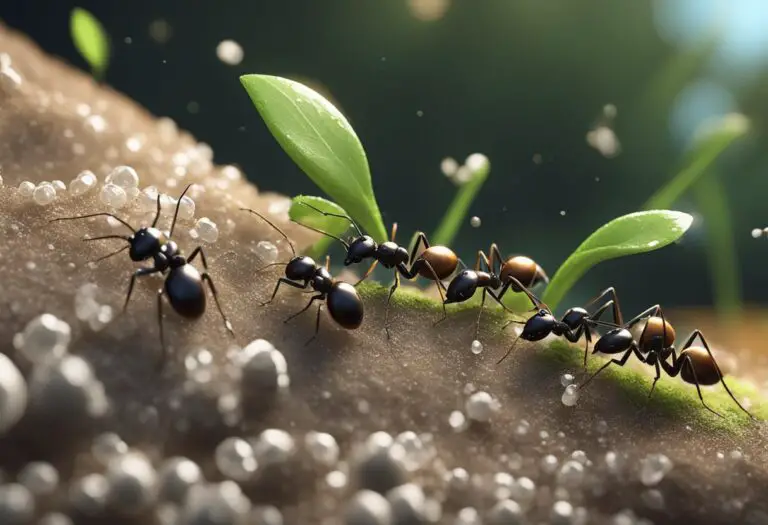When to Remove Debris from Ant Habitats? A Guide for Ant Keepers
Ants are fascinating creatures that play an important role in our ecosystem. They are known for their ability to work together to build complex structures and for their impressive strength. In order to keep ants healthy and thriving, it is important to maintain a clean and organized habitat for them to live in. One aspect of this is knowing when to remove debris from their habitat.
Debris in an ant habitat can come in many forms, such as dead insects, bits of food, and waste. While some debris can be beneficial to ants, providing them with a food source and helping to regulate humidity levels, too much debris can be harmful. It can attract pests and pathogens, leading to disease and infestations. Therefore, it is important to know when to remove debris from an ant habitat in order to maintain a healthy environment for the ants.
There are several factors to consider when determining when to remove debris from an ant habitat, including the size and type of ant colony, the amount and type of debris present, and the overall cleanliness of the habitat. By understanding these factors and implementing a regular cleaning schedule, ant enthusiasts can ensure that their ant colonies remain healthy and thriving.
Understanding Ant Habitats

Ants are social insects that live in colonies. They can be found in a variety of habitats, ranging from natural to artificial environments. Understanding the different types of ant habitats is essential for maintaining their well-being and removing debris from their homes.
Natural Ant Habitats
Ants are found in a variety of natural habitats, including forests, fields, deserts, and even in your backyard. These habitats provide ants with shelter, food, and water. Ants build their nests in soil, leaf litter, or under rocks, and they use pheromones to communicate with each other.
Removing debris from natural ant habitats can be challenging, as it may disrupt the ants’ natural environment. However, removing large debris such as fallen branches or rocks can help prevent damage to the ant colony.
Artificial Ant Habitats
Artificial ant habitats include ant farms, ant terrariums, and other man-made structures designed to house ants. These habitats provide ants with a controlled environment that mimics their natural habitat. Artificial ant habitats are typically easier to clean and maintain than natural habitats.
When cleaning artificial ant habitats, it is important to remove any debris that may accumulate in the habitat. Debris can include dead insects, food scraps, and fecal matter. Failure to remove debris from the habitat can lead to the growth of harmful bacteria or mold, which can be harmful to the ants.
In conclusion, understanding the different types of ant habitats is essential for maintaining the well-being of ant colonies. Whether the habitat is natural or artificial, removing debris from the habitat is crucial for preventing damage to the colony and ensuring the ants’ health.
Signs for Debris Removal

When it comes to maintaining ant habitats, debris removal is an essential task. Over time, debris can accumulate in an ant habitat, and if not removed, it can create an unhealthy environment for the ants. Here are some signs that indicate it’s time to remove debris from the ant habitat.
Visible Waste Accumulation
One of the most obvious signs that it’s time to remove debris from an ant habitat is the visible waste accumulation. If you notice that there are piles of debris, dead insects, or other waste in the habitat, it’s time to remove it. Too much waste can cause health problems for the ants and attract unwanted pests.
To prevent waste accumulation, it’s recommended to remove any uneaten food, dead insects, and other debris from the ant habitat regularly. This will help keep the environment clean and healthy for the ants.
Ant Behavior Indicators
Another sign that it’s time to remove debris from an ant habitat is the behavior of the ants. If you notice that the ants are avoiding certain areas of the habitat or are spending more time outside the nest, it may be an indication that there is too much debris in the habitat.
Ants are very particular about their environment, and if they feel that their habitat is dirty, they will try to avoid it. To prevent this from happening, it’s recommended to clean the habitat regularly and remove any debris that may be causing discomfort to the ants.
In conclusion, debris removal is an essential task when it comes to maintaining ant habitats. By keeping an eye out for visible waste accumulation and ant behavior indicators, you can ensure that your ant habitat remains clean and healthy for your ants.
Timing for Debris Removal

Ant habitats can accumulate debris over time, which can hinder their ability to function properly. However, it is important to consider the timing of debris removal to ensure the health and well-being of the ant colony.
Seasonal Considerations
The timing of debris removal can vary depending on the season. During the winter months, ants tend to be less active and may hibernate, so removing debris during this time may not be necessary. However, during the spring and summer months when ants are more active, debris removal may be more important to maintain a healthy habitat.
Lifecycle Events
Ant colonies go through various lifecycle events such as egg-laying, larval development, and pupation. During these events, it is important to avoid disturbing the habitat as much as possible. Removing debris during these times can disrupt the colony and cause stress to the ants.
Overall, it is important to consider the timing of debris removal to ensure the health and well-being of the ant colony. By being mindful of seasonal considerations and lifecycle events, ant keepers can maintain a clean and healthy habitat for their ants.
Methods of Debris Removal

Manual Removal Techniques
One of the most effective methods of debris removal from ant habitats is manual removal. This technique involves physically removing debris using tools such as tweezers, forceps, or a small brush. It is important to be gentle when using these tools to avoid damaging the ant habitat.
When using tweezers or forceps, it is recommended to use ones with a fine tip to ensure that small debris can be easily removed. A small brush can also be used to sweep away larger debris. It is important to ensure that the brush is clean and dry to avoid introducing any harmful substances to the ant habitat.
Natural Cleaning Agents
Another method of debris removal is the use of natural cleaning agents. These agents can help to break down debris and make it easier to remove. One such agent is vinegar, which can be diluted with water and applied to the debris using a cotton swab or cloth.
Another natural cleaning agent is lemon juice, which can be mixed with water and applied to the debris using a spray bottle. It is important to ensure that the lemon juice is fresh and not mixed with any other substances.
In addition to vinegar and lemon juice, baking soda can also be used as a natural cleaning agent. It can be mixed with water to form a paste and applied to the debris using a cloth or brush. After a few minutes, the paste can be wiped away using a clean cloth.
Overall, manual removal techniques and natural cleaning agents are effective methods of debris removal from ant habitats. By using these techniques, one can ensure that the ant habitat remains clean and healthy for the ants to thrive.
Preventive Measures

Ant habitats can become cluttered with debris over time, which can negatively impact the health and wellbeing of the colony. To prevent this, there are several preventive measures that can be taken.
Habitat Maintenance Routines
One of the most effective ways to prevent debris buildup in ant habitats is to establish a regular maintenance routine. This can include tasks such as removing uneaten food, cleaning out waste, and replacing old nesting materials. By staying on top of these tasks, ant keepers can ensure that their colonies remain healthy and clean.
Ant-Friendly Designs
Another way to prevent debris buildup is to design ant habitats in a way that is conducive to cleanliness. For example, using smooth surfaces and easy-to-clean materials can make it easier to remove debris and maintain a clean environment. Additionally, providing ample space for foraging and waste disposal can help prevent clutter from accumulating in the colony.
Overall, by implementing these preventive measures, ant keepers can ensure that their colonies remain healthy and free from debris buildup.
Impact on Ant Colonies

Ants are known for their ability to adapt to changing environments. However, removing debris from their habitats can have a significant impact on their health, survival, and colony growth.
Health and Survival
Debris such as dead insects, leaves, and twigs provide a natural habitat for ants. They use these materials to build their nests and protect their colonies from predators. Removing these materials can disrupt their natural environment, making them more vulnerable to diseases and predators.
Furthermore, debris provides a source of food for ants. They feed on the organic matter found in the debris, which helps them maintain their energy levels and overall health. Removing debris can deprive ants of this vital source of nutrition, leading to malnourishment and weakened immune systems.
Colony Growth
Ant colonies rely on debris for their growth and expansion. The debris provides a suitable environment for the queen to lay her eggs and for the larvae to develop. Removing debris can disrupt this process, leading to stunted growth and reduced colony size.
In addition, debris provides a natural barrier for ants, protecting them from harsh weather conditions and predators. Removing debris can expose the colony to these external factors, leading to increased mortality rates and reduced overall survival.
In conclusion, removing debris from ant habitats can have a significant impact on their health, survival, and colony growth. It is important to consider the potential consequences before removing any debris and to take steps to minimize disruption to their natural environment.
Regulatory and Ethical Considerations

Legal Restrictions
When it comes to removing debris from ant habitats, there are certain legal restrictions that need to be taken into consideration. In many countries, it is illegal to disturb or destroy the natural habitat of any species, including ants. Therefore, before removing any debris from an ant habitat, it is important to check with the local authorities to ensure that it is legal to do so.
In addition, there may be specific regulations in place regarding the removal of debris from ant habitats, such as the use of certain tools or equipment. It is important to be aware of these regulations and follow them to avoid any legal issues.
Humane Practices
In addition to legal considerations, there are also ethical considerations when it comes to removing debris from ant habitats. Ants are living creatures and their habitat is essential to their survival. Therefore, it is important to ensure that any debris removal is done in a humane and ethical manner.
One way to do this is to avoid using harsh chemicals or other substances that may harm the ants or their habitat. Instead, consider using natural methods, such as hand removal or gentle brushing, to remove debris.
It is also important to minimize any disruption to the ants’ natural habitat during the debris removal process. This may involve taking extra care when removing debris near ant nests or colonies, or avoiding removal altogether during certain times of the year when ants are particularly active.
Overall, it is important to approach debris removal from ant habitats with care and consideration for both legal and ethical considerations. By following best practices and being mindful of the impact of debris removal on the ants and their habitat, it is possible to maintain a healthy and thriving ant population while also keeping their habitat clean and debris-free.

